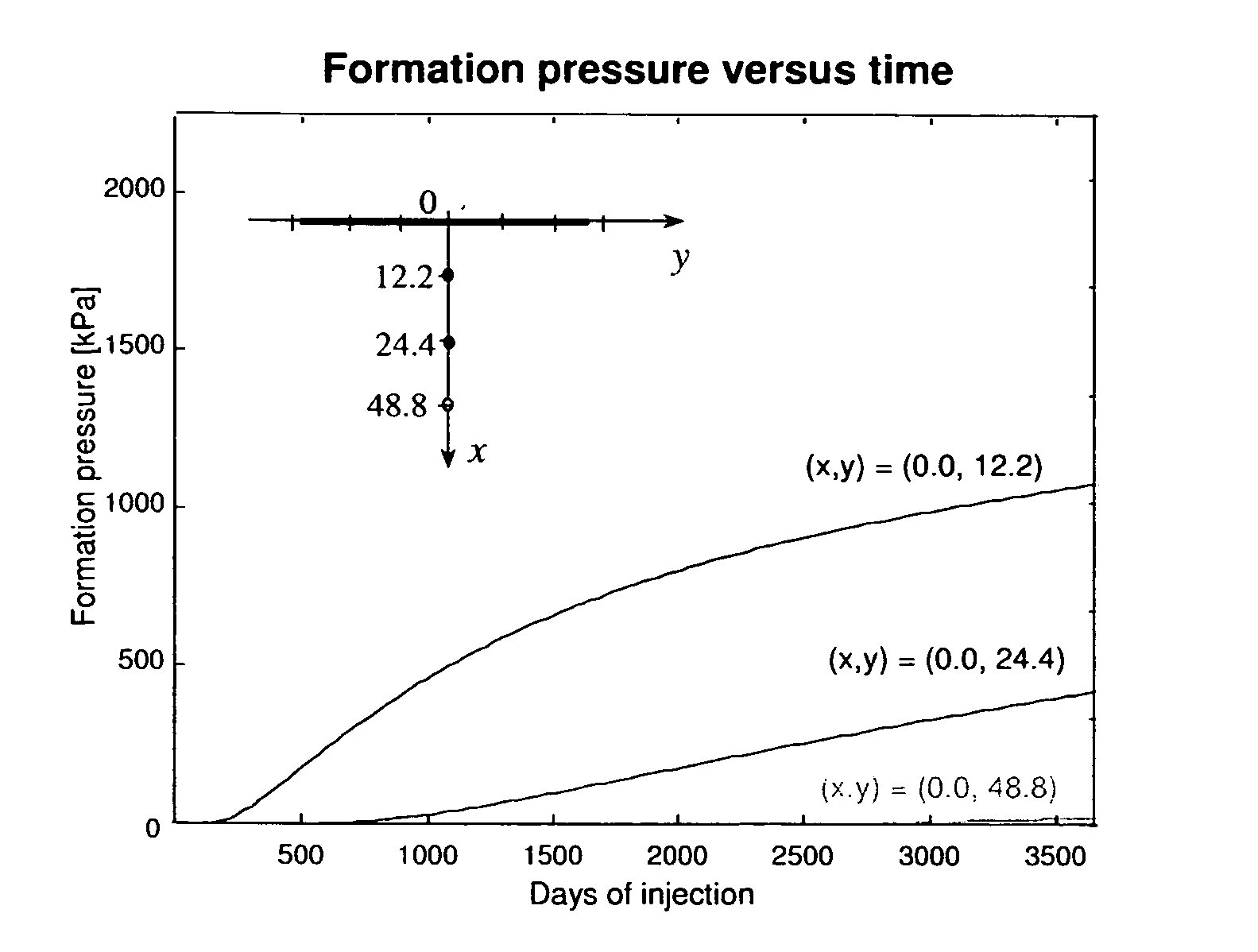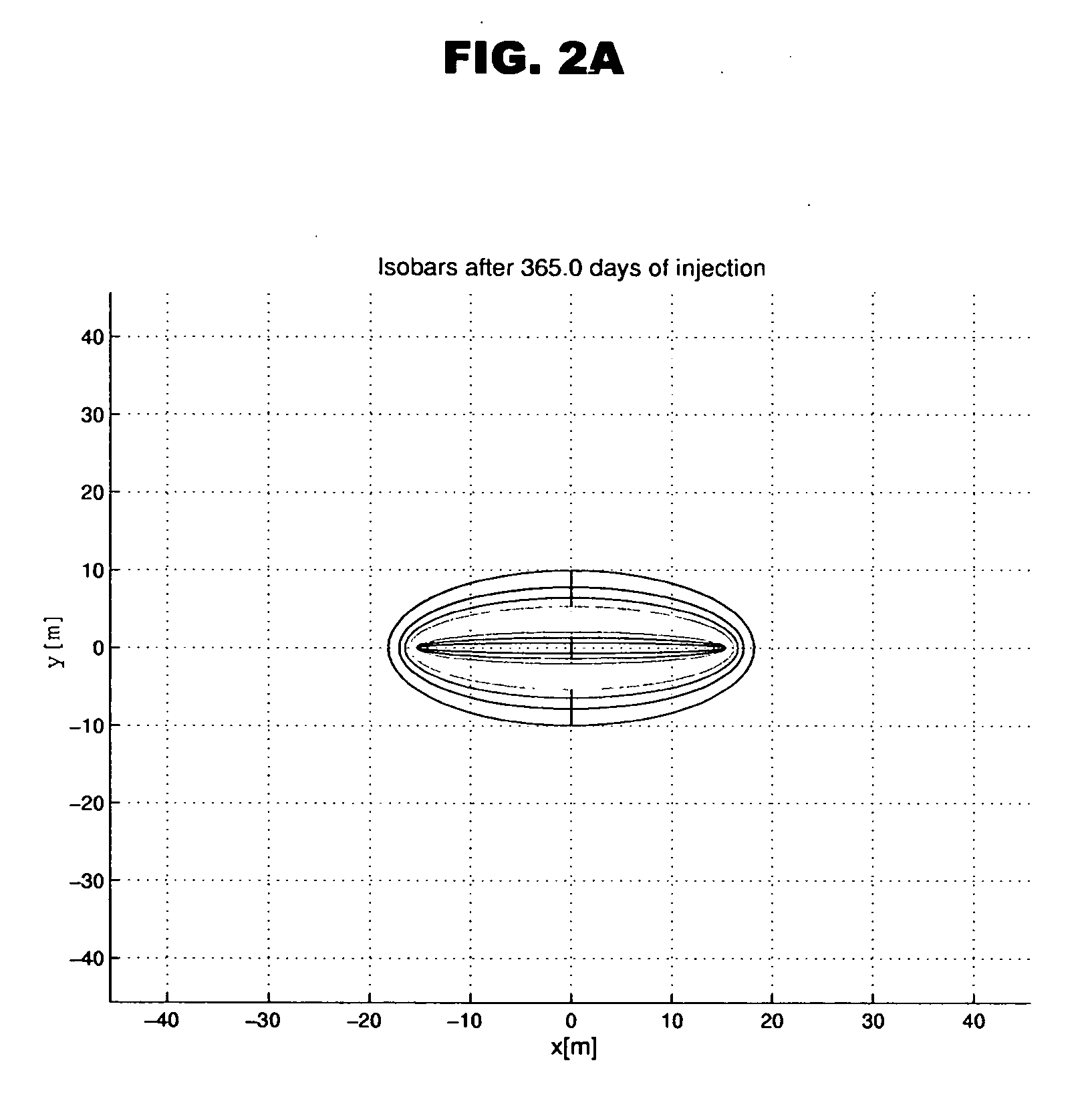Waterflood control system for maximizing total oil recovery
a control system and waterflood technology, applied in seismology, well accessories, borehole/well accessories, etc., can solve the problems of failure, dead, or lost well, and no longer useful injector function,
- Summary
- Abstract
- Description
- Claims
- Application Information
AI Technical Summary
Benefits of technology
Problems solved by technology
Method used
Image
Examples
Embodiment Construction
[0056] The following references are hereby specifically incorporated in their entirety by attachment to this specification and each describe part of the means for performing the process described herein: [0057]“Control Model of Water Injection into a Layered Formation”, Paper SPE 59300, Accepted by SPEJ, December 2000, Authors: Silin and Patzek; [0058]“Waterflood Surveillance and Supervisory Control”, Paper SPE 59295, Presented at the 2000 SPE / DOE Improved Oil Recovery Symposium held in Tulsa, Okla., 3-5 Apr., 2000; [0059]“Transport in Porous Media, TIPM 1493”, Water Injection Into a Low—Permeability Rock—1. Hydrofracture Growth, Authors: Silin and Patzek; [0060]“Transport in Porous Media, TIPM 1493”, Water Injection Into a Low—Permeability Rock—2. Control Model, Authors: Silin and Patzek; and “Use of InSAR in Surveillance and Control of a Large field Project” Authors: Silin and Patzek.
Defined terms:
[0061] Computer: any device capable of performing the steps developed in this inv...
PUM
 Login to View More
Login to View More Abstract
Description
Claims
Application Information
 Login to View More
Login to View More - R&D
- Intellectual Property
- Life Sciences
- Materials
- Tech Scout
- Unparalleled Data Quality
- Higher Quality Content
- 60% Fewer Hallucinations
Browse by: Latest US Patents, China's latest patents, Technical Efficacy Thesaurus, Application Domain, Technology Topic, Popular Technical Reports.
© 2025 PatSnap. All rights reserved.Legal|Privacy policy|Modern Slavery Act Transparency Statement|Sitemap|About US| Contact US: help@patsnap.com



